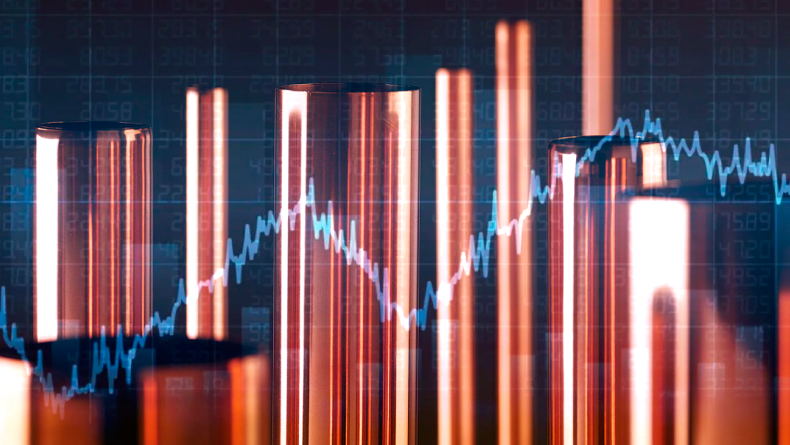In an era defined by rapid technological evolution and the global pivot toward sustainability, copper has emerged from the shadows of the commodity market to claim a strategic role on the world stage. Long regarded as a foundational industrial metal, copper is now being reevaluated by traders and policymakers alike, not just for its economic value, but for its geopolitical significance and essential role in global industrial shifts.
As nations ramp up their green energy agendas and infrastructure investments, and as the AI revolution drives demand for energy-dense technologies, copper has found itself at the heart of an industrial renaissance. For market participants, this transition brings both opportunity and volatility. Understanding the forces at play is key to navigating copper trading in this new era.
Global Supply Dynamics and Geopolitical Factors
Copper’s global supply chain is under increasing strain. Around 40% of the world’s copper production comes from Chile and Peru—two countries with histories of labor unrest, political instability, and tightening environmental regulations. Meanwhile, the Democratic Republic of Congo (DRC), another major copper producer, faces ongoing infrastructure and governance challenges.
These factors create persistent supply risks. Even short-lived disruptions—such as mine strikes, water shortages, or licensing delays—can ripple across global markets. The long lead times required to bring new copper mines online, often a decade or more, mean that supply cannot easily be ramped up to meet surging demand.
Complicating matters further is China, the world’s largest consumer and importer of copper. China’s stockpiling practices, domestic stimulus decisions, and industrial output data can all influence global copper prices. For traders, understanding the nuances of Chinese policy is as critical as watching supply metrics from mining regions.
Demand-Side Shifts and Industrial Drivers
While supply issues often dominate headlines, it’s the shifting demand landscape that is fundamentally reshaping copper’s global role. At the heart of this change is the transition to green energy and electrification, which is highly copper-intensive. A single wind turbine can require up to four tons of copper, and electric vehicles use two to four times more than traditional cars. Copper is also critical to solar power systems, energy storage, and modern power grids due to its excellent conductivity.
The EV market alone is driving a surge in copper usage. As nations move to phase out combustion engine vehicles, copper demand in vehicle manufacturing, batteries, and charging networks is climbing fast. BloombergNEF projects that EV-related copper demand could grow by over 800% by 2030.
At the same time, the boom in AI and cloud computing is quietly becoming a key copper driver. Data centers, with their complex cooling and power systems, require large amounts of copper, as does the infrastructure for producing advanced AI chips.
Infrastructure investment adds yet another layer. Fiscal policies like the U.S. Inflation Reduction Act and the EU Green Deal are injecting billions into construction and energy systems, reinforcing long-term demand for copper across sectors.
Copper Market Fundamentals and Pricing Trends
Copper trading is influenced by a blend of fundamental and technical factors. The metal is traded primarily on the London Metal Exchange (LME), the COMEX division of the New York Mercantile Exchange, and the Shanghai Futures Exchange. Understanding market dynamics is essential for any serious trader.
- Spot and Futures Markets: While the spot market reflects immediate demand, copper futures allow traders to hedge and speculate on longer-term trends. Price volatility in futures markets often stems from macroeconomic announcements, inventory reports, or geopolitical tensions.
- Inventory Levels: LME and COMEX inventory levels are crucial indicators. Falling stockpiles generally signal tightening supply and support higher prices, while inventory builds may indicate softening demand or speculative overhangs.
- Technical Analysis Tools: Traders often rely on moving averages, Fibonacci retracements, RSI levels, and support/resistance zones to anticipate short-term price movements. For example, a bullish breakout above a multi-week resistance line often coincides with strong buying interest from industrial or institutional players.
- Currency Correlations: Copper prices tend to move inversely with the U.S. dollar. When the dollar strengthens, copper becomes more expensive for international buyers, typically pressuring prices. Inflation expectations and commodity index trends also contribute to copper’s directional bias.
To learn more about how to gain exposure to copper, check here.
Trading Strategies in the Copper Market
With copper’s volatility and macroeconomic sensitivity, traders must take a strategic and informed approach. Trend trading based on indicators like global PMI reports, GDP figures, and renewable energy developments can help identify directional shifts. For instance, a sudden slowdown in China may offer short-term trading opportunities.
Event-driven strategies also play a key role. Disruptions such as mine strikes, extreme weather, or regulatory changes often lead to sharp price movements. Traders typically look for technical setups like intraday breakouts or gap reversals to find favorable entries.
Copper can be accessed through futures, ETFs like CPER, and options, depending on a trader’s style. Some also include it within broader commodity baskets to diversify exposure.
Given the potential for large price swings, risk management is crucial. This includes disciplined position sizing, stop-loss use, and staying updated on major headlines, especially when trading with leverage.
Conclusion
Copper’s journey from an industrial workhorse to a strategic metal is emblematic of deeper transformations in the global economy. As industries electrify and societies pursue sustainability at scale, copper has become a linchpin for innovation and progress.
For traders, the key lies in staying ahead of the curve—watching supply bottlenecks, understanding global policy shifts, and anticipating technological disruptions. Whether you’re seeking short-term volatility plays or long-term investment theses, copper deserves a central place on your radar.

